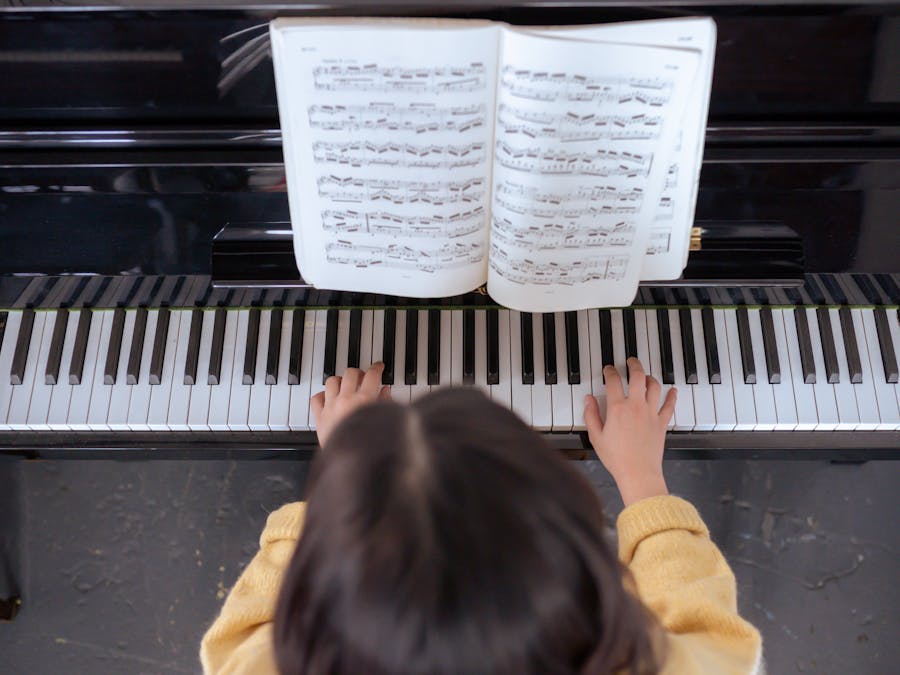 Piano Guidance
Piano Guidance
 Piano Guidance
Piano Guidance

 Photo: Mikhail Nilov
Photo: Mikhail Nilov
Types of upright pianos include the Spinet, Console, and Studio, all of which have different sizes and unique sounds. The Spinet piano is the smallest of all pianos.

F major Scales with flat key signatures Major key Number of flats Flat notes F major 1 B♭ B♭ major 2 B♭, E♭ E♭ major 3 B♭, E♭, A♭ A♭ major 4 B♭,...
Read More »
Two famous pianists who self-taught piano and their approach. The two self-taught piano players that will be explored are Lucas Debargue and Paul...
Read More »The piano was invented around 1700 in Italy by harpsichord maker Bartolomeo di Francesco Cristofori, who worked with the Florentine Court of the Grand Prince Ferdinando de’ Medici. Cristofori named his invention gravicèmbalo col piano e forte, which means “harpsichord with loud and soft.” It was later shortened to “fortepiano” and finally to just “piano.” Through the decades and generations, this instrument underwent tremendous changes, leading to the modern form of the piano. According to the New World Encyclopedia, modern pianos come in two basic configurations and several sizes: the upright piano and the grand piano. Upright pianos, also called vertical pianos which are derived from upright harpsichords, are more compact because the frame and strings are placed vertically, extending in both directions from the keyboard and hammers. It appears that the placement of an instrument in an upright or vertical position became a solution to rectify spatial problems in studios and homes. It is considered harder to produce a sensitive action when the hammers move sideways, rather than upward against gravity; however, the very best upright pianos now approach the level of grand pianos of the same size in tone quality and responsiveness. Types of upright pianos include the Spinet, Console, and Studio, all of which have different sizes and unique sounds. The Spinet piano is the smallest of all pianos. Spinet pianos have a large number of working parts and have the characterization as being dropped action pianos. Dropped action refers to the hammer-like striking action to strike the keys. Console pianos are among the most common types of upright pianos that people purchase. They are slightly larger than a Spinet and are just the right size for home enjoyment. This piano is capable of producing beautiful music and is an excellent instrument for someone to learn on. They aren’t too intimidating, and beginners find it easy to get used to the size. Studio pianos are taller than both the Spinet and Console pianos, standing between 43” and 47” on average. For this reason, they are more commonly found in studio environments than they are in people’s homes.

two octaves and a third Voice characteristics Elvis Presley was a baritone whose voice had an extraordinary compass — the so-called register — and...
Read More »
Key findings The type of job with the highest divorce rate is military work. ... Following military workers, those who have a job in health care...
Read More »The Studio piano offers a richer tone than the two, but does have a different feel in comparison to a Spinet or Console piano. The most common use for this style instrument is music composition. Grand pianos have the frame and strings placed horizontally, with the strings extending away from the keyboard. This avoids the problems inherent in an upright piano but takes up a large amount of space and needs a spacious room with high ceilings for proper resonance. Several sizes of grand piano exist from the baby grand to the concert grand. Typically, longer pianos have better sound and lower inharmonicity of the strings (the strings can be tuned closer to equal temperament in relation to the standard pitch with less stretching), so that full-size grands are almost always used for public concerts, whereas baby grands are commonly purchased for domestic use where space and cost are crucial considerations. Since the 1980s, digital pianos have been available, which use digital sampling technology to reproduce the sound of each piano note. Digital pianos have become quite sophisticated, with standard pedals, weighted keys, multiple voices, MIDI interfaces, and so on in the better models. However, digital pianos are not considered by most experts as competing with the best acoustic pianos in tone quality. With development, digital pianos are used more widely since no tuning is needed, they are portable, and are usually less expensive than acoustic models. They can be used with computers and loudspeakers, and composing on them is facilitated with software products.

What is another word for pianist? accompanist instrumentalist musician player pianoist piano player
Read More »
Simply Piano: The 5 Best Alternatives 1 – La Touche Musicale. Let's start this ranking of the best alternatives to Simply Piano with one of the...
Read More »
OUR TOP TESTED PRODUCTS Razer Pro Type Ultra. Best Overall Keyboard. ... Drop ENTR Mechanical Keyboard. Best Budget Keyboard. ... Corsair K95 RGB...
Read More »
Learning to play the piano as an adult can be intimidating. Many people limit themselves because they think they are too old or that it's too late...
Read More »